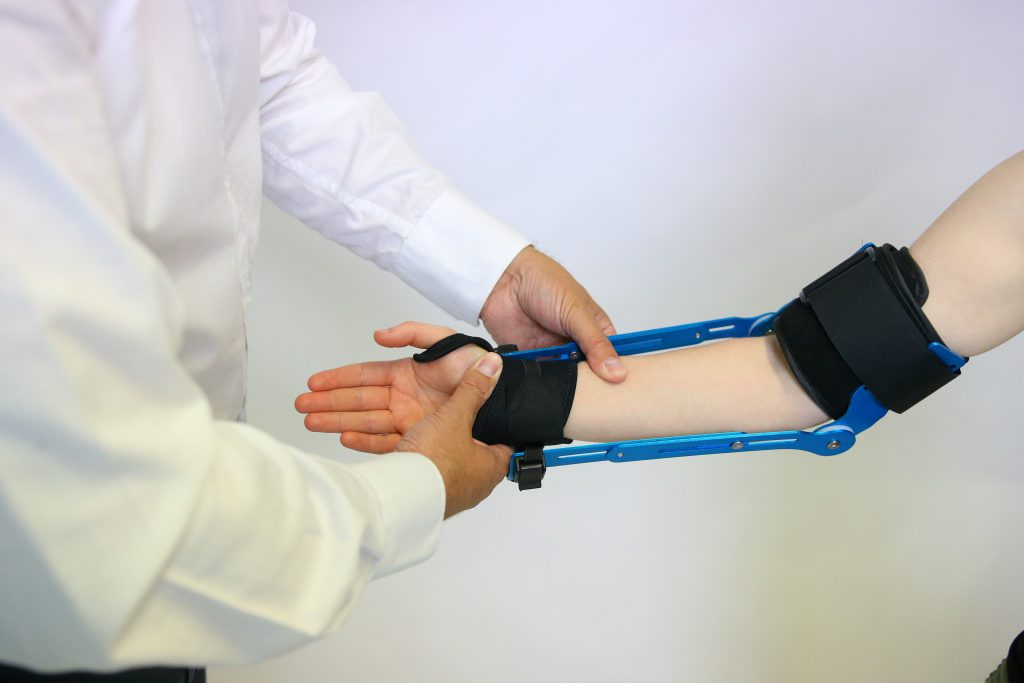End-Range Time
Dynamic orthoses (splints) have been used to stretch many a joint in many a direction, with varying degrees of efficacy. In research, generally the reasons for good efficacy are:
- the orthosis is able to be worn for hours every day
- the orthosis holds at end-of-range
both of these are key to predicting whether an orthosis will work – in many cases more so than patient factors of malunion, injury severity, chronicity or hard-end feel and despite therapy plateau (see our research page).
This needs to be addressed by the therapist from the start.
Wear time
It’s very common for a patient to wear an orthosis for less than the required time. This is often the reason for poor results. It’s worth asking them about their wear time. Typical times for such orthoses are 4-8 hours per day.
End-of-range
An orthosis that doesn’t hold the joint at it’s end-of-range will never be successful. Usually if the patient improves while wearing orthoses like this, they would have improved as much without it. This is commonly the reason neoprene or TAP splints are not indicated for stiffness in rotation, and the reason some custom thermoplastic orthoses fail. Whether an orthosis holds a patient at their end-of-range or not can be tested easily. Simply don the orthosis and see if you can passively move the joint further than the orthosis. If you can, you need to adjust or choose another orthosis. It is also worth checking that the patient or their carer can don the orthosis themselves in a way which ensures end-of-range positioning – that’s what’s happening at home.

While other variables of therapy for stiffness often need to be addressed, these types of orthoses generally prove to have good efficacy alone. If they are not, troubleshoot the total-end-range-time. That is – the amount of time they’re wearing it daily and the joint position within the orthosis. Browse through research to see what is expected in rotation with a good orthosis.
So, the troubleshooting checklist is:
- Duration: the patient can and does wear for the prescribed duration.
- End-of-range positioning: the orthosis holds consistently at end-of-range. The patient should feel stretch, and you shouldn’t be able to passively stretch them further.
- Correct orthosis: The wrong choice never holds at end-of-range, for example a neoprene orthosis for rotation will never hold in firm supination or pronation.
- Self donning: The patient or their carer should be able to apply the orthosis themselves so it holds at end-of-range.




